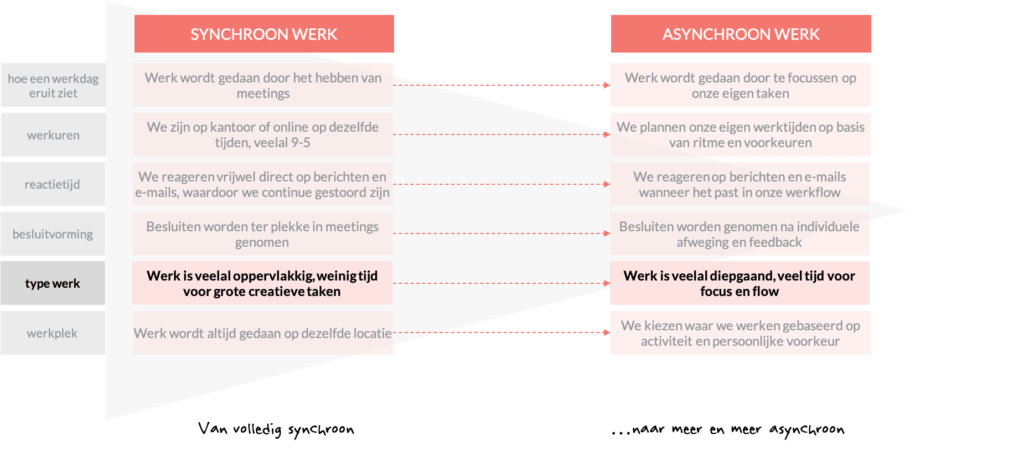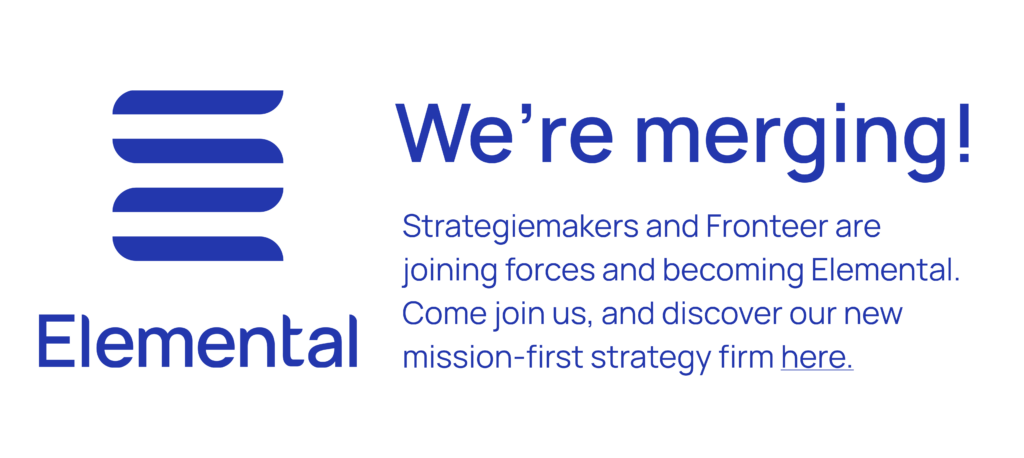Why we do too much shallow work
Earlier we wrote about working asynchronously and why it is important to think about it. One of the main advantages? More time for deep instead of shallow work! In this blog we take you through the differences between the two, to help determine whether (a form of) asynchronous working can be interesting for your team and organization.
(A)synchronous working in 6 equations
As you may have read before, we use 6 equations to denote asynchronous work. In this blog we explained that working synchronously and asynchronously is not an absolute choice, but a gradual scale on which you move. Both sides have value, but in many cases, it may be worthwhile to move (more) to the asynchronous side.

Shallow work in working synchronously
One of those cases is the type of work. When we work synchronously – i.e. in the same place and at the same time – we often work superficially. The fact that we are together and working on something at the same time makes it common and frequent to interrupt each other. From an urgent email that comes in, to the sound of a WhatsApp message or the colleague who looks around the corner. It minimizes the time that we can continuously focus on an assignment. As a result, we mainly focus on shallow work.
Examples of shallow work include:
- Process mail from your inbox
- Respond to colleagues via tools such as Teams or Slack
- Make calls to get things started or to arrange things
- Attending status or update meetings
Atlassian has made a cool yet confrontational infographic of the time we waste at work. Did you know that we spend an average of 6 hours a day reading and answering emails? That you lose no less than 10 IQ points when you have to focus again after an interruption? And that on average we think that 50% of all meetings are a waste of our time and that they also turn out to be a waste of time? Time for change!
Deep work thanks to asynchronous work
With only shallow work you sometimes cannot get to the work that really matters. How often do you think “I have been working all day, but I haven’t actually done anything?” Or “It’s evening, can I finally really get some work done?” The things we now try to do in short moments during the working day or in the worst cases in the evening or the weekend, are often the things with which we make the most impact: the deep work. The work that requires us to be able to work for a longer consecutive period of time without distraction. Cal Newport goes much further in his book ‘Deep Work’ about the benefits of deep work.
“If you keep interrupting your evening to check and respond to email, you’re robbing your directed attention centers of the uninterrupted rest they need for restoration” – Cal Newport
Examples of in-depth work include:
- Prepare a launch plan for a new product, service or feature
- Devising and drawing strategic plans
- Prepare keynote presentation
- Look up information about a specific problem
By working more asynchronously, i.e. by offering more room to work in different places and times than colleagues, more deep work can be done. And by doing more deep work, we increase our impact inside and outside the organization.
“Efforts to deepen your focus will struggle if you don’t simultaneously wean your mind from a dependence on distraction.” – Cal Newport

The balance in synchronous versus asynchronous
Knowing the difference between shallow and deep work is step 1; doing something with it is the next step by working (more) asynchronously. In our previous blog we explained our scale with the balance between synchronous and asynchronous working. The higher on the scale, the more ‘distraction’ you remove for employees and colleagues and the more deep work you can expect to be carried out.
Do you also want to make the shift?
Curious about how working asynchronously can help your company to get more deep work done? Make the move from trying to keep several conversations in the air continuously as you work, to making time to converse and then getting back to your focused work mode. We like to think along with you! Call or email us and keep a close eye on our next blogs.



